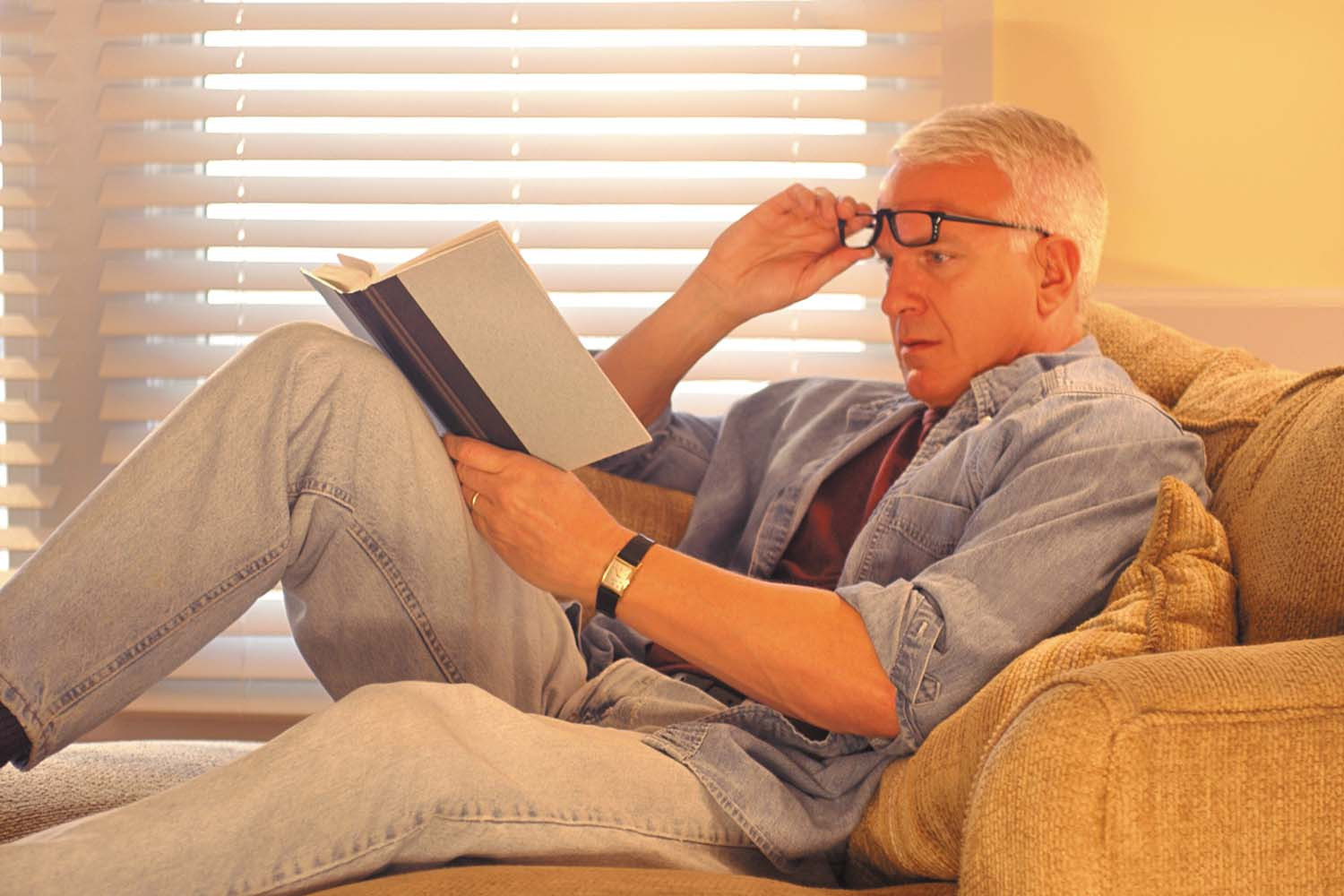Focus on easier reading
Here's how to make reading and close-up work less stressful on the eyes.

At some point, almost everyone needs reading glasses. As people age, their eyes naturally lose their ability to focus up close, a condition called presbyopia. This occurs when the lenses inside the eyes become less flexible.
Common signs of presbyopia include the need to hold reading material at arm's length, blurred vision, and eye fatigue when doing close-up work.
"Presbyopia can't be prevented or reversed," says Dr. Matthew Gardiner, assistant professor of ophthalmology at Harvard-affiliated Massachusetts Eye and Ear. "The condition may worsen over time, to where you need to change your eyeglass prescription frequently. However, by age 60, most changes in near vision begin to slow, and you need upgrades less often."
Get an exam
All people over age 50 should have a periodic vision evaluation even if they don't notice any problems, says Dr. Gardiner. "Your optometrist can detect changes in your vision, even if you don't."
Besides prescribing reading glasses, or bifocals if you also have trouble seeing far away, your clinician can check for other eye problems, such as cataracts (clouding of the lens), macular degeneration, and glaucoma.
If your presbyopia is not too severe, you could try drugstore reading glasses instead of prescription lenses. "There's nothing wrong with them, and they won't damage your eyes, since they work like magnifiers," says Dr. Gardiner.
Drugstore glasses are measured in power units called diopters (abbreviated as "D" on the label). Most glasses range from +1.25 to +3.50 in increments of +0.25. Try the lowest power first and experiment until you find the right number that lets you read clearly at a comfortable distance.
An eye on safetyAnother way to protect your eyesight is to invest in high-quality safety goggles or glasses. "Use them for any kind of house and yard project like mowing the lawn, trimming branches, using power tools, even polishing something," says Dr. Matthew Gardiner, assistant professor of ophthalmology at Harvard-affiliated Massachusetts Eye and Ear. Tight-fitting goggles that cover the entire eye area provide the best protection. If these are not comfortable, opt for wraparound glasses — not sunglass styles — that provide shields from the top, bottom, and sides. You can find goggles and wraparound glasses at most hardware stores. |
See clearly
Even with proper reading glasses, you still may have trouble seeing clearly up close. Here are some strategies that may help.
Use an eye lubricant. Your tear glands produce fewer tears over time. Tears provide lubricant to the eyes' smooth reflective surface. Without enough moisture, the eyes can become dry, which makes it harder to focus up close. If you suffer from regular dry eye, try over-the-counter artificial tears. "However, do not use products designed to soothe eye irritations," says Dr. Gardiner. "Look for saline as the base ingredient."
Get brighter. Increase the brightness of your reading and work lamps. Dr. Gardiner recommends using at least a 100-watt bulb. The sharp white light of halogen or fluorescent bulbs is considered best for illumination.
Rest your eyes. When you read from a computer or tablet for long periods, make sure to take regular breaks. "It's common to stare at screens for long periods without blinking, which can increase eye strain and make the eyes dry quicker," says Dr. Gardiner. Try the 20-20-20 rule. Every 20 minutes, look away from the screen at something around 20 feet away for 20 seconds.
Change font sizes. Increase the font size in your Web browser and cellphone. For an iPhone, go to Settings, tap Display and Brightness, and choose text size. For a Web browser like Chrome, choose Preferences and then click on the Appearance tab to view font sizes. You can also adjust brightness and contrast to make electronic viewing easier.
Try spectacle-mounted magnifiers. These devices are large magnifying lenses that are mounted on your glasses or on a headband. They are ideal for performing delicate close-up tasks, such as letter writing or repair work. Another option is a giant magnifying glass that resembles a floor or desk lamp. Handheld versions are useful for viewing small items like labels and medicine directions. Most brands also include lights.
Image: Jupiterimages/Getty Images
Disclaimer:
As a service to our readers, Harvard Health Publishing provides access to our library of archived content. Please note the date of last review or update on all articles.
No content on this site, regardless of date, should ever be used as a substitute for direct medical advice from your doctor or other qualified clinician.












